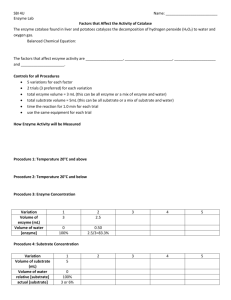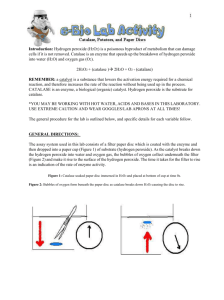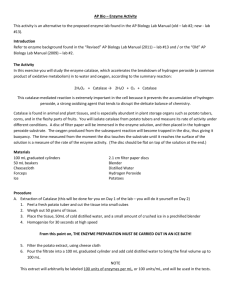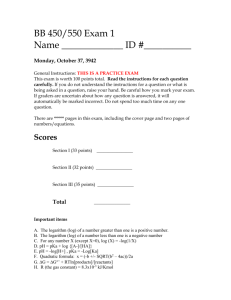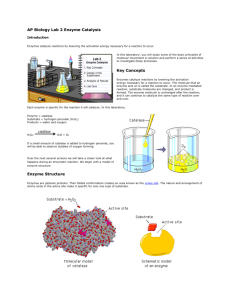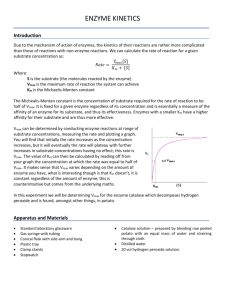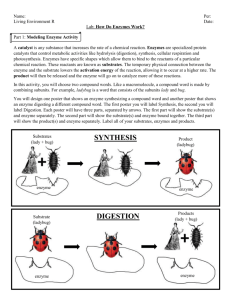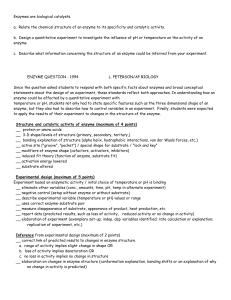Enzyme Activity Lab Pre-lab write-up Clark
advertisement
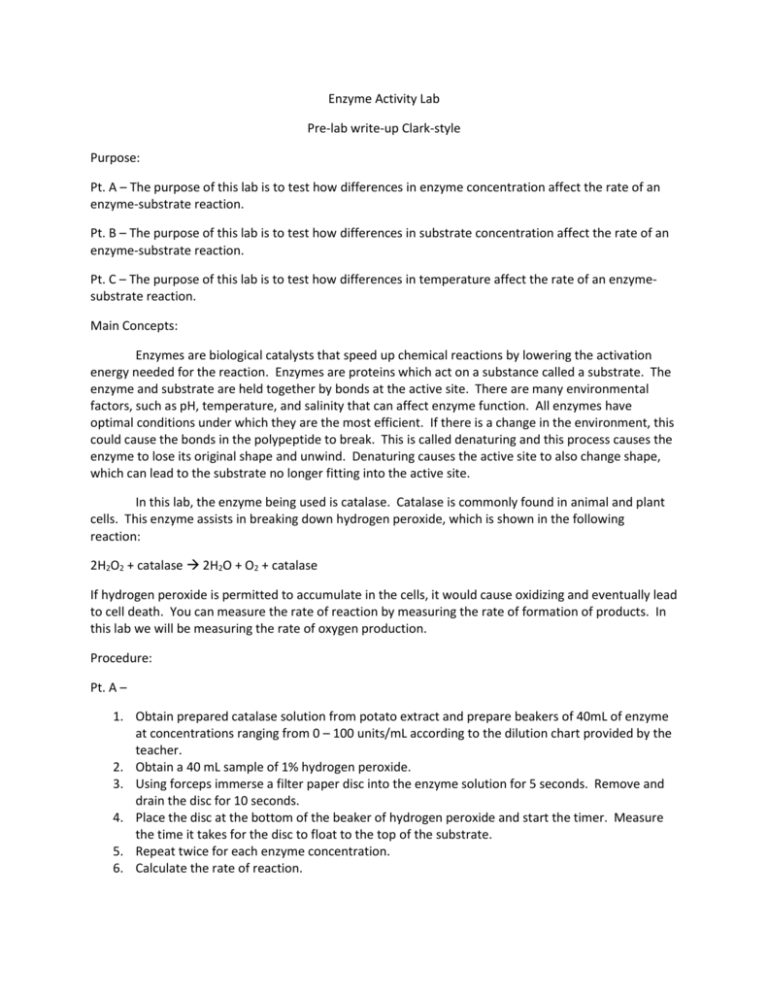
Enzyme Activity Lab Pre-lab write-up Clark-style Purpose: Pt. A – The purpose of this lab is to test how differences in enzyme concentration affect the rate of an enzyme-substrate reaction. Pt. B – The purpose of this lab is to test how differences in substrate concentration affect the rate of an enzyme-substrate reaction. Pt. C – The purpose of this lab is to test how differences in temperature affect the rate of an enzymesubstrate reaction. Main Concepts: Enzymes are biological catalysts that speed up chemical reactions by lowering the activation energy needed for the reaction. Enzymes are proteins which act on a substance called a substrate. The enzyme and substrate are held together by bonds at the active site. There are many environmental factors, such as pH, temperature, and salinity that can affect enzyme function. All enzymes have optimal conditions under which they are the most efficient. If there is a change in the environment, this could cause the bonds in the polypeptide to break. This is called denaturing and this process causes the enzyme to lose its original shape and unwind. Denaturing causes the active site to also change shape, which can lead to the substrate no longer fitting into the active site. In this lab, the enzyme being used is catalase. Catalase is commonly found in animal and plant cells. This enzyme assists in breaking down hydrogen peroxide, which is shown in the following reaction: 2H2O2 + catalase 2H2O + O2 + catalase If hydrogen peroxide is permitted to accumulate in the cells, it would cause oxidizing and eventually lead to cell death. You can measure the rate of reaction by measuring the rate of formation of products. In this lab we will be measuring the rate of oxygen production. Procedure: Pt. A – 1. Obtain prepared catalase solution from potato extract and prepare beakers of 40mL of enzyme at concentrations ranging from 0 – 100 units/mL according to the dilution chart provided by the teacher. 2. Obtain a 40 mL sample of 1% hydrogen peroxide. 3. Using forceps immerse a filter paper disc into the enzyme solution for 5 seconds. Remove and drain the disc for 10 seconds. 4. Place the disc at the bottom of the beaker of hydrogen peroxide and start the timer. Measure the time it takes for the disc to float to the top of the substrate. 5. Repeat twice for each enzyme concentration. 6. Calculate the rate of reaction. Pt. B – repeat steps for part A except use enzyme at 100 units/mL and make 40mL solutions of substrate at concentrations ranging from 0%-3% according to the dilution chart provided by the teacher. Pt. C – repeat steps for part A except use enzyme at 100 units/mL and substrate at 1%. Perform experiment in water baths set at 0, 10, 22, 40, and 65°C. Variables: Pt. A – IV = change in enzyme conc; DV = rate of reaction; control = 0 units/mL Pt. B – IV = change in substrate conc; DV = rate of reaction; control = 0% Pt. C – IV = temp; DV = rate of reaction; control = room temp Hypothesis: Make your own – I’m not going to do everything for you Sample Size/trials: Pt. A – sample size = 8; trials = 2 Pt. B – sample size = 9; trials = 2 Pt. C – sample size = 5; trials = 2 Data description: For all parts - quantitative = reaction rate; qualitative = bubbling


